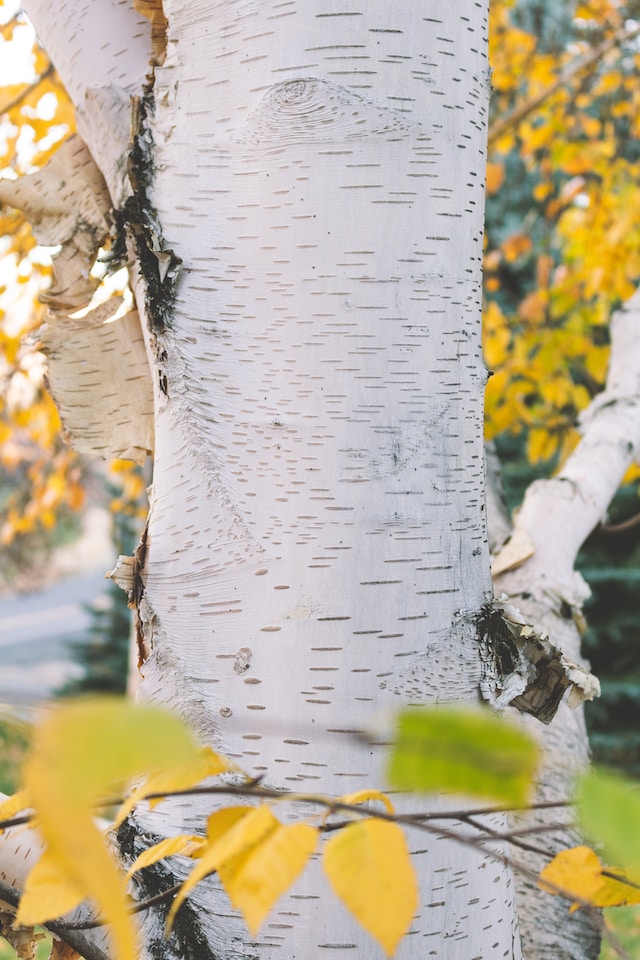Paper birch is best known for its beautiful bark. On young stems, the bark is thin, dark red to near black. As it ages, the bark turns creamy white and sheds in sheets. Paper birch is a small to medium sized tree, up to 25-30m in height. It has a narrow, oval crown, with ascending branches. The leaves of the paper birch are ovate in shape, with a pointed tip, and are double toothed. The flowers are catkins, a flowering spike also found on willows. The twigs are fuzzy. It is commonly found along rivers and other wet areas.(Tabitha Martens for Winnipeg Trails, 2021).
Indigenous communities across Canada have a multitude of uses for the paper birch. Birch bark is used for making baskets used for harvesting, cooking, storing food and objects. Once cleaned, the baskets can be used again and again. Birch bark is also used to make canoes, sleds, and covers for tipis. Bark should only be collected in the summer and special care must be taken to ensure no damage to the tree. Exposing large areas of the inner bark may kill the tree. It is easiest to work with birch bark when taken straight from the tree, soaked in water to make it more flexible for working with. Historically, the inner bark was used as a starvation food. The sap can also be boiled down to make a syrup. (Tabitha Martens for Winnipeg Trails, 2021).
Paper birch sap can be used as medicine to treat colds, sore throats and to soothe gums of teething babies. The wood was used for furniture, axe-handles, and snowshoes. (Poplar River Anishinaabe Plant Guide. Berens E., Bruce E., Bruce V., Mason M. 2022. Pg 28).
